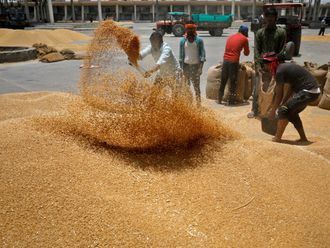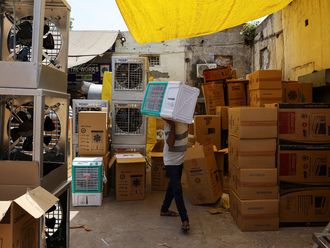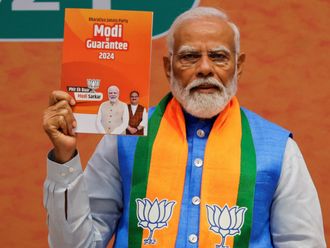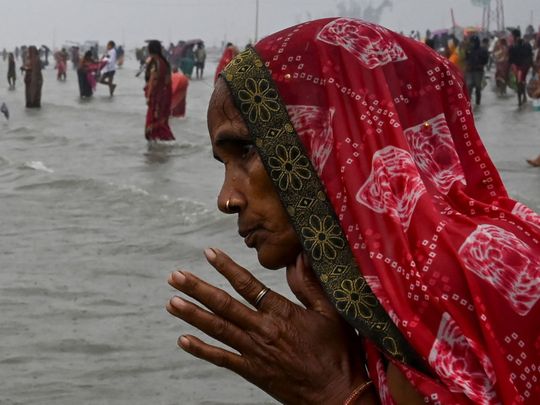
Sagar Island: Drones sprayed holy water from the Ganges on thousands of Hindu pilgrims on Friday to reduce crowding during a massive festival being held in India.
Officials had said they expected around three million people at the Gangasagar Mela - including ash-smeared, dreadlocked ascetics - to attend the festival’s climax on Sagar Island, where the Ganges meets the Bay of Bengal.
“At the crack of dawn, there was a sea of people,” local official Bankim Hazra said by telephone.
“Holy water from the river Ganges was sprayed from drones on pilgrims... to prevent crowding,” he said.
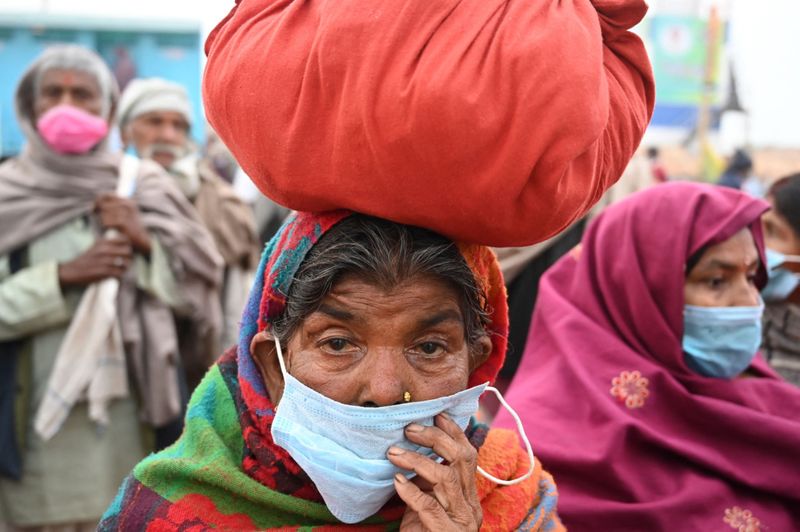
“But the saints and a large number of people were bent on taking the dip... Pilgrims, most of them without masks, outnumbered the security personnel.”
An AFP photographer said that there were fewer people than in recent years and that rain put off some pilgrims from making the journey.
But there were still huge crowds, mostly without masks, taking a holy dip in the river.
A police official on duty at the event said that it was “impossible” to enforce COVID-19 restrictions.
“Most pilgrims are bent on defying the rules,” he said.
No lockdown
Fatalities from India’s current wave of infections remain a fraction of what they were during the surge in April and May last year, with 315 deaths recorded Thursday compared with as many as 4,000 per day at the peak.
Infections are rising fast, however, with almost 265,000 new cases on Thursday. Some models predict India could experience as many as 800,000 cases per day in a few weeks, twice the rate seen nine months ago.
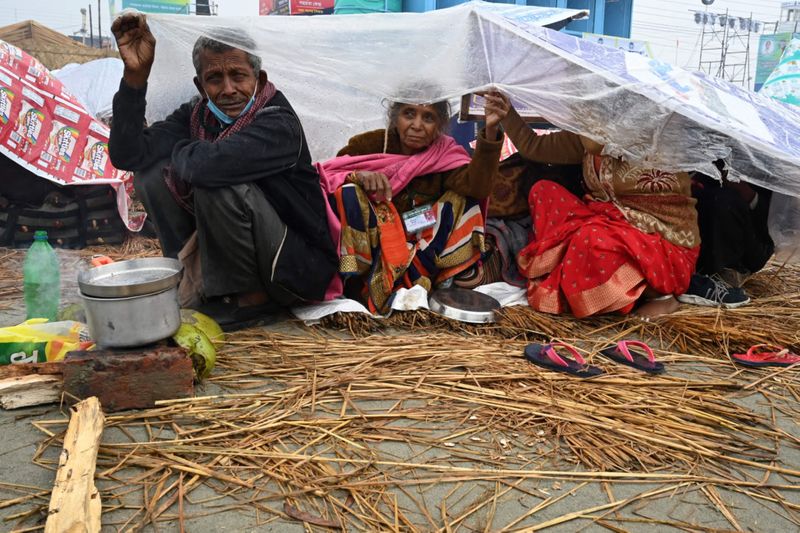
Keen to avoid another painful lockdown for millions of workers reliant on a few dollars in daily wages, authorities in different parts of India have sought to restrict gatherings.
In New Delhi, all bars, restaurants and private offices are shut and the capital is set to go into its second weekend curfew on Friday night.
In the financial capital Mumbai, gatherings of more than four people are banned.
But in West Bengal state, the Calcutta High Court on Friday allowed the Gangasagar Mela to proceed.
As with 2021’s Kumbh Mela, it has attracted people from across northern India who, after cramming onto trains, buses and boats to reach the island, will then go home - potentially taking the highly transmissible Omicron virus variant with them.
Amitava Nandy, a virologist from the School of Tropical Medicines in Kolkata, said the government “has neither the facilities nor the manpower” to test everyone attending or impose social distancing.
“A stampede-like situation could happen if the police try to enforce social distancing on the river bank,” Nandy told AFP.
Devotee Sarbananda Mishra, a 56-year-old school teacher from the neighbouring state of Bihar, said: “Faith in God will overcome the fear of Covid. The bathing will cleanse them of all their sins and bring salvation.”
“Death is the ultimate truth. What is the point of living with fear?”



